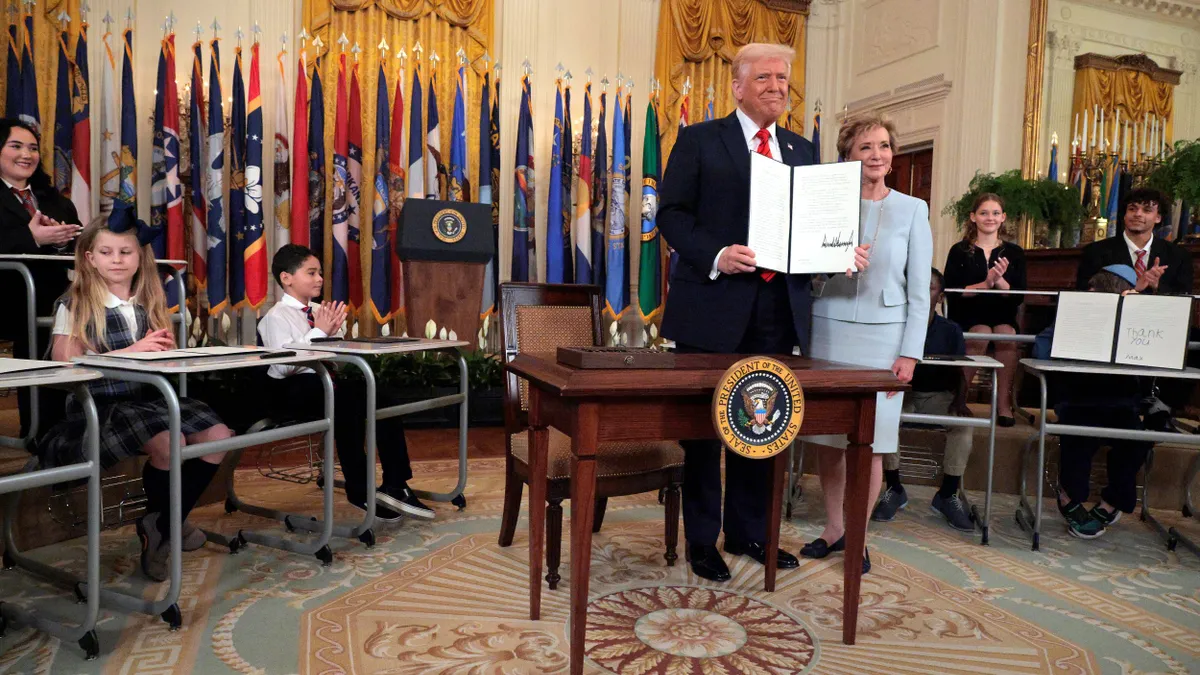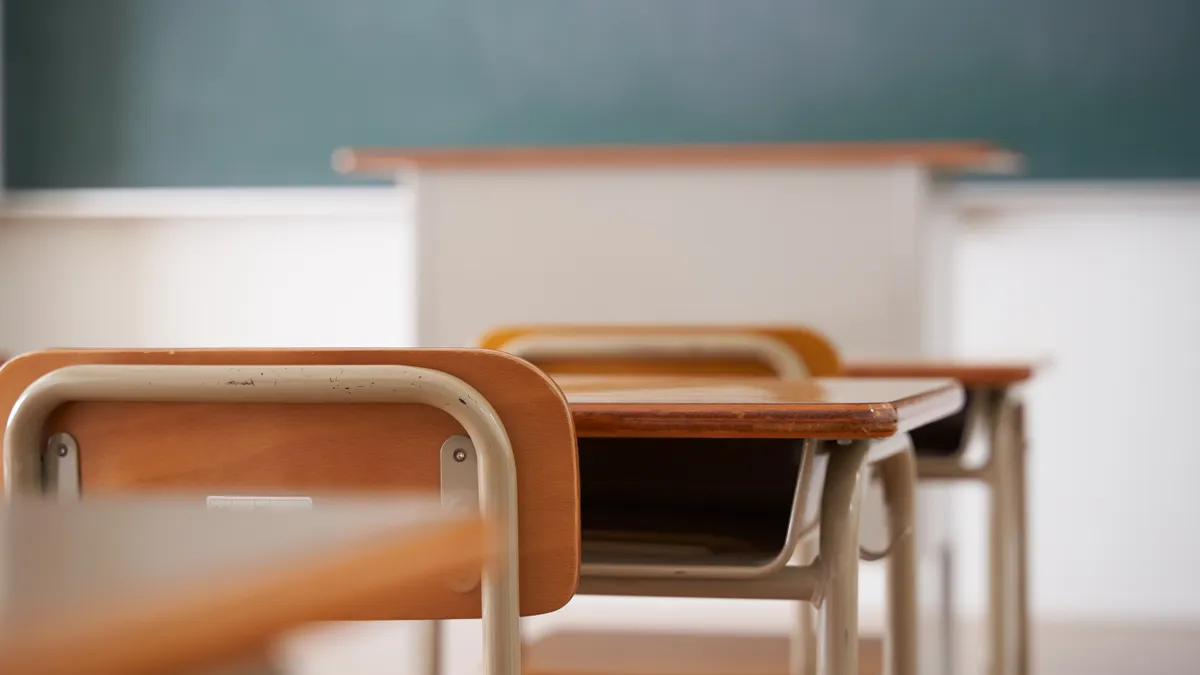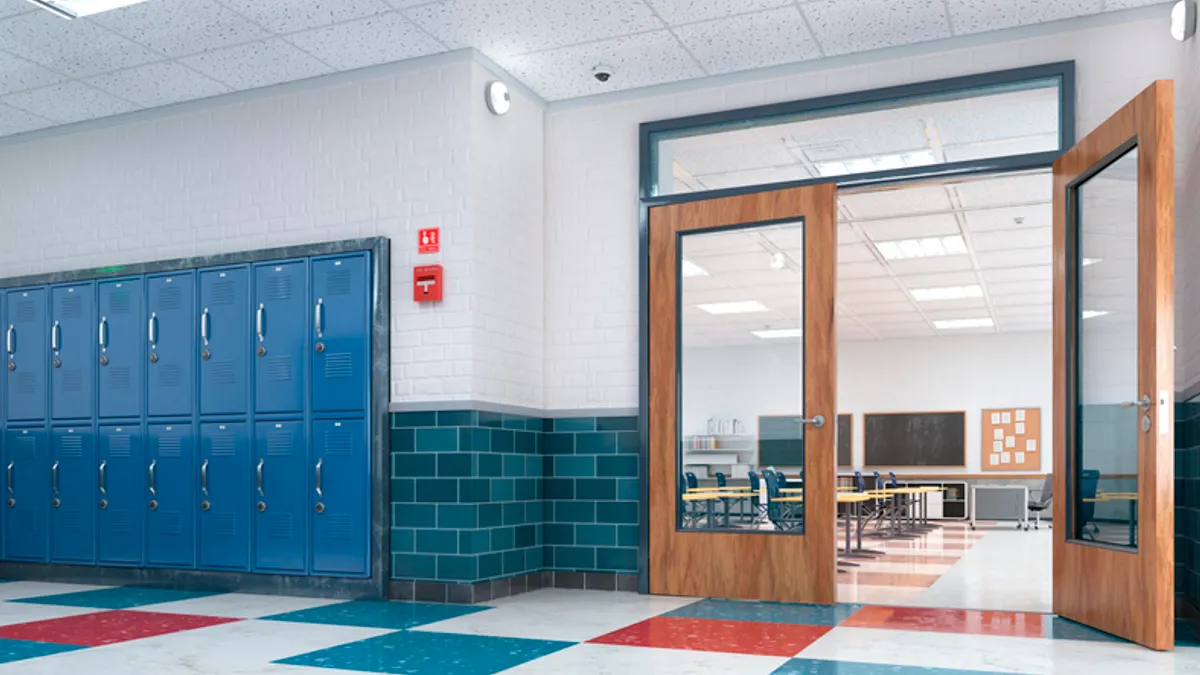A new White House executive order calling for "common sense" in school discipline policies by removing practices based on "discriminatory equity ideology" will drive even wider racial disparities in discipline than currently exist, critics say.
Rather than being common sense, the directive would "permit school discipline practices that target and punish students of color and students with disabilities at disproportionate rates," said Denise Forte, president and CEO of EdTrust, in a statement Thursday, a day after President Donald Trump signed the order. EdTrust, a nonprofit, works with school systems to close opportunity gaps for students of color and students from low-income backgrounds.
Additionally, EdTrust in a separate Thursday statement to K-12 Dive said, "When the dust settles from the education chaos being created by Trump administration, students — especially students from low-income backgrounds, students of color, students with disabilities, English learners, and students in rural areas — will be worse off, and the Trump administration wants to make sure we don’t have the data and research to prove it.”
Dan Losen, senior director of education at the National Center for Youth Law, said the Trump administration is creating a false dichotomy that schools either need harsh discipline practices or they deal with out-of-control and unsafe student behaviors.
The reality, Losen said, is that well-trained educators and administrators have many approaches to reducing student misconduct that are evidence-based. "Many schools and superintendents are aware that the best antidote to violence, to drug involvement, to gang involvement, is to try to find ways to keep more kids in school," Losen said.
Closing racial gaps in school discipline has been a priority at the local, state and national levels for many years. Schools have also shunned strict zero-tolerance discipline policies in favor of responsive and restorative practices and other approaches that help students examine their behavior and make amends to those harmed.
Supporters of alternatives to suspending or expelling students — or what's called "exclusionary discipline" — say those different approaches help keep students connected to school and reduce the school-to-prison pipeline. They also note that alternative strategies help reduce racial disparities in school discipline.
The U.S. Department of Education's Civil Rights Data Collection found that even though Black students represented 15% of K-12 student enrollment in the 2021-22 school year, they accounted for 19% of students who were secluded and 26% who were physically restrained. And while Black children accounted for 18% of preschool enrollment, 38% received one or more out-of-school suspensions, and 33% were expelled.
In the years following the COVID-19 pandemic, schools have reported an uptick in mental health and disruptive behaviors in students. In fact, 68% of respondents said behavioral disruptions have increased since the 2019-20 school year in an EAB survey of school employees published in 2023.
At the same time, schools said they lack the funding and staffing to adequately address students’ mental health needs. Furthermore a 2024 Rand Corp. report found that challenging student behaviors contribute to teacher burnout.
On Thursday, the departments of Education, Homeland Security, Justice, and Health and Human Services issued a resource for K-12 threat assessment practices to help prevent school violence and create a safe school environment.
The order's expectations
Student discipline policies are set at the school or district level. However, the federal government can issue guidance and hold schools accountable for discriminatory practices.
The executive order signed by President Donald Trump on Wednesday lays out a timeline of expectations for U.S. Education Secretary Linda McMahon. In one month, McMahon, along with the U.S. attorney general, is to issue school discipline guidance that reminds districts and states of their obligations under Title VI to protect students against racial discrimination. Title VI of the Civil Rights Act prohibits discrimination based on race, color or national origin in federally funded programs.
In two months, McMahon and the U.S. attorney general are required to begin working with states to prevent racial discrimination in school discipline. By late July, the U.S. Department of Defense is to issue a revised school discipline code to guide the school experiences of children from military-service families.
Lastly, by late August, McMahon, along with leaders from various federal agencies, is to submit a report on the "status of discriminatory-equity-ideology-based school discipline and behavior modification techniques in American public education."
Rep. Tim Walberg, R-Mich., chair of the House Education and Workforce Committee, praised the executive order in a statement on Wednesday, "The Left’s fixation on ‘disparate impact’ has led to a profound failure in many schools to address disruptions or behavioral problems in the classroom, negatively impacting all students as a result."
Walberg added, "The Trump administration is restoring common sense in schools by working to remove racialized notions of DEI and saying unequivocally: All students must be treated equally.”
Trump also signed a broader executive order on Wednesday, not restricted to education programs, that calls for the elimination of "disparate-impact liability in all contexts to the maximum degree possible." The order says that the U.S. should be a "colorblind society" without "race- or sex-based favoritism.”























